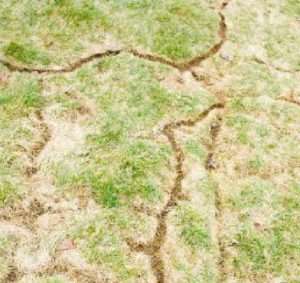Vole Yard Damage Solutions: Effective Control Approaches
Vole Yard Damage Solutions: Effective Control Approaches
Blog Article
Comprehensive Guide to Effective Vole Insect Control: Invasion Identification and Therapy Methods
In the world of reliable parasite control, vole problems present an one-of-a-kind challenge that requires a tactical technique. By checking out the nuances of vole actions, understanding crucial indicators of invasion, and assessing a variety of control options, one can establish an extensive strategy to deal with these elusive pests.
Understanding Vole Actions
Vole habits is identified by their tunneling routines and quick recreation prices, making them a difficult bug to control efficiently. These small rats commonly create elaborate passage systems underground, utilizing them for shelter, food storage, and transport. Voles are herbivores, taking in a selection of plants, origins, turfs, and light bulbs, which can cause substantial damage to yards, orchards, and grass. Their quick reproductive price further complicates control efforts, with ladies capable of producing multiple trashes in a single year, each consisting of several offspring.
Voles are most active during the early morning and night hours, spending the majority of their time foraging for food. Their burrowing behaviors not just disrupt yards and gardens yet additionally make them challenging to remove and detect. Recognizing vole behavior is critical for reliable insect control approaches. By identifying their burrow locations, keeping track of feeding locations, and executing targeted control methods, such as trapping or environment alteration, vole invasions can be handled effectively.
Signs of Vole Problem

Avoidance Approaches
Carrying out efficient avoidance approaches is crucial in decreasing vole problems and protecting plant life from their harmful feeding practices. To prevent vole problems, it is vital to begin by removing possible food sources and sanctuary.
On a regular basis examining the residential or commercial property for indications of vole task, such as paths and burrow openings, is important for early detection and punctual action. If vole task is thought, consider utilizing traps or repellents purposefully placed near their pathways.
Non-Lethal Control Approaches
To successfully take care of vole populaces while focusing on humane techniques, non-lethal control methods supply useful solutions for reducing vole damage in landscapes and gardens. One efficient method is the use of physical obstacles such as equipment cloth or wire mesh to shield prone plants. These barriers can be hidden a minimum of 12 inches curved and deep at a 90-degree angle to stop voles from tunneling beneath. Furthermore, environment adjustment can hinder voles by decreasing their chosen food resources and hiding spots. Keeping a well-mowed yard, getting rid of particles, and keeping vegetation cut can make the atmosphere less attractive to voles.

Lethal Control Options
One reliable approach for resolving vole problems in landscapes and yards involves the critical use deadly control options. When confronted with a severe vole infestation that non-lethal techniques have actually failed to consist of, carrying out lethal control steps ends up being essential. One frequently used lethal control alternative is making use of snap traps. These catches are developed to swiftly and humanely eliminate voles upon activation, making them a preferred selection for many gardeners and landscaping companies. To raise the effectiveness of snap traps, it is recommended to put them in locations where vole task is high, such as along paths or near burrow entrances. Another lethal control choice is the use of poisonous lures specifically formulated to target voles. These baits include toxin that is ingested by the voles, causing their eventual demise. Nevertheless, care needs to be exercised when using harmful baits to avoid damage to non-target pets or pet dogs. In general, when employing dangerous control alternatives, it is necessary to do so properly and according to neighborhood laws to successfully handle vole infestations.
Final Thought
To conclude, effective vole parasite control requires a thorough understanding of vole habits, recognition of indications of infestation, execution of prevention methods, and utilization of both non-lethal and dangerous control methods. By integrating these strategies, individuals can successfully manage vole populations and shield their property from damage. It is essential to address vole invasions without delay to prevent additional problems and lessen the influence on the surrounding atmosphere.
Given the complex passage vole pest control systems and quick reproduction rates particular of voles, acknowledging the indicators of vole invasion comes to be vital in efficient parasite control. One of the primary indicators of vole visibility is the presence of surface runways or trails in turf or snow, typically about 1-2 inches broad, produced as voles take a trip in between their burrows and food resources.To properly take care of vole populaces while focusing on gentle approaches, non-lethal control approaches offer practical services for decreasing vole damage in landscapes and gardens.One efficient technique for resolving vole problems in landscapes and yards entails the strategic use of deadly control alternatives. vole lawn damage.In final thought, efficient vole insect control needs a comprehensive understanding of vole behavior, identification of indications of problem, implementation of prevention methods, and application of both non-lethal and deadly control methods
Report this page